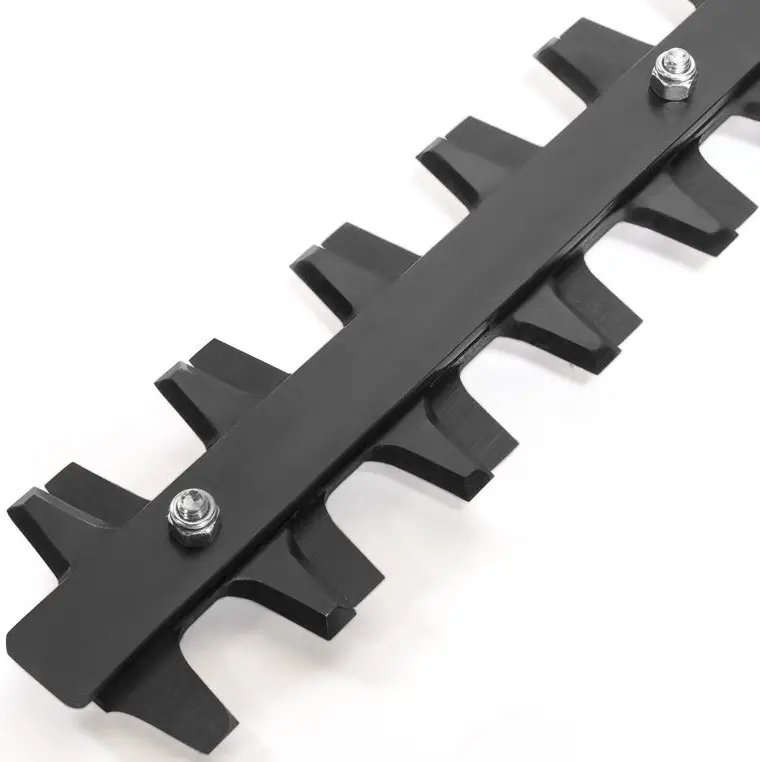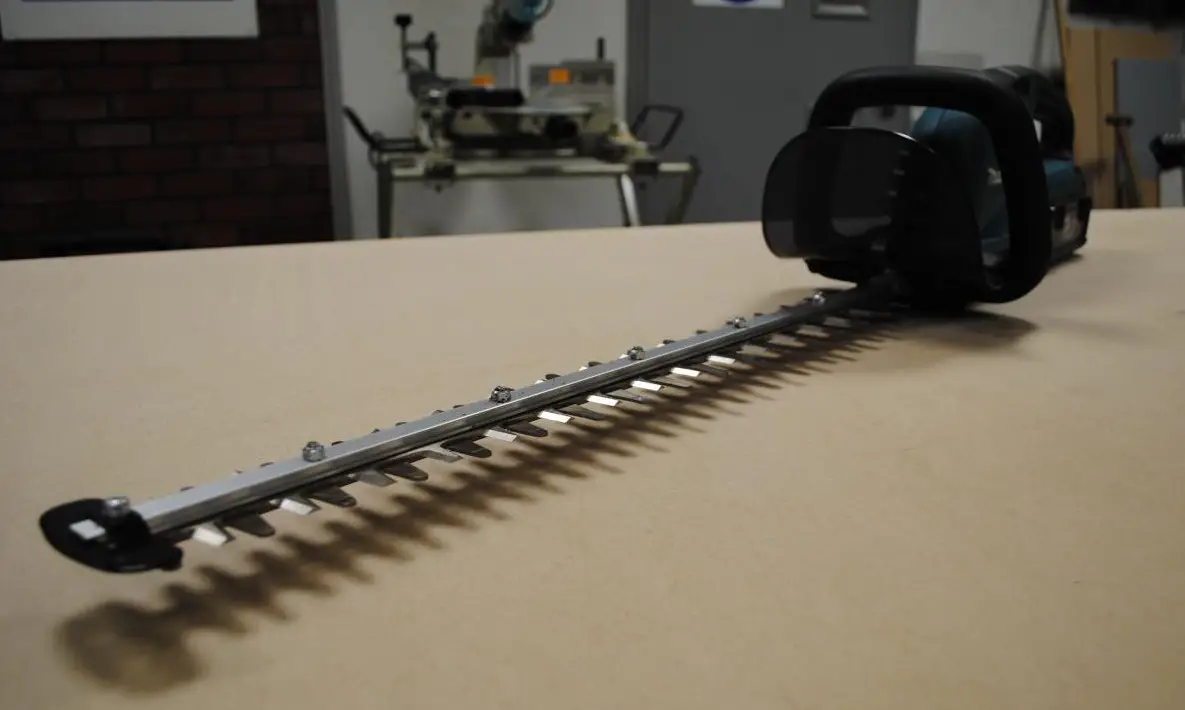It’s that time of year when the garden suddenly seems to sprout overnight. Everything needs taming, including those overgrown hedges.
Thankfully, there’s a range of tools to make the job easier, and, if you’re like me, you’ll want to take advantage of this fact. So, you’ll need something to make short work of those hedges!
But do you buy hedge trimmers or hedge cutters? Is there even a difference? Confusingly, many stores use both terms interchangeably, so how do you know which is which?
Let me share what I discovered when I asked the same question.
What Are Hedge Trimmers?
We’ll begin with these before moving on to our main subject, hedge cutters.
The key is in the word trimmers; these tools are designed to take on lighter work, shaping and trimming hedges that aren’t too overgrown. They are also better for younger shrubs and bushes that haven’t matured*. These will be softer with thinner twigs and branches, so a hedge trimmer shouldn’t damage them.
*Hot tip: never use hedge trimmers on a bush or shrub that’s less than two years old! They only require gentle pruning, usually in early spring or maybe in winter.
Hedge trimmers are ideal for this kind of work and will keep the young hedge in good shape, provided you do this fairly regularly and don’t let the growth get out of hand. This will help to produce a healthy bush with dense, compact, lush foliage.
Closer teeth, less power
The teeth on a hedge trimmer blade are close together, meaning that you won’t be able to tackle thick branches. This wouldn’t be a good idea anyway as they are not designed for this kind of work and you’ll probably bend or break the teeth.
Also, most models aren’t powerful enough to handle such heavy-duty work.

What Are Hedge Cutters?
Essentially, they look much the same as hedge trimmers and perform the same function: shaping, cutting, and tidying hedges to keep them under control.
However, there are a few differences that set them apart, you just need to know what to look for.
For example, the teeth on hedge cutters are spaced further apart, allowing the machine to tackle larger branches without getting jammed. This is combined with a more powerful motor (or engine) to cope with the task.
The Right Tools For The Right Job
Now, don’t be tempted to overdo it: just because it’s got more power doesn’t mean you can take down an entire tree! That’s what we have chainsaws for. As a general rule, don’t try to tackle anything thicker than 1.5 inches, and certainly not on a regular basis.
However, hedge cutters are generally more robust than trimmers, especially if you opt for a petrol-powered model as these tend to have some real clout. They are ideal for mature, well-established hedges that need some serious work.
Choosing The Right One
Choosing between a hedge trimmer and a hedge cutter can be difficult, particularly when shopping online. Most stores, rather unhelpfully, refer to hedge trimmers as hedge cutters and vice versa.
This means that you’ve got to look at the specifications of each machine before you buy!
But how do you know what you want?
Using the benefit of my experience, I’ve put together a few notes to guide you:
Cutters Or Trimmers?
Take a good look at your garden and see what needs attention and what you’ll be expecting to tackle long-term. Do you have informal hedges, shrubs or bushes dotted around or perhaps just along one length of the boundary? Are these only a few feet tall?
Maybe you have a large plot with substantial hedges forming a solid boundary around the entire property? It’s all about scale and size, and you need the right tool for each job.
If you expect to be only trimming hedges and cutting through a lightweight branch or two once or twice a year, then a basic trimmer will suffice. On the other hand, if you have a super-sized garden with masses of thick bushes and hedges with thicker branches, you’ll need to invest in a heavy-duty hedge cutter.
What Kind Of Hedges Do You Have?
Depending on what variety you have, hedges tend to need cutting back about once or twice a year, while others might need more regular care, and this could affect your decision as to whether you need trimmers or cutters.
Evergreen hedging, including box and conifer, is generally easy to maintain and will need trimming a couple of times a year, although Leylandii will require trimming at least three times a year, especially on top.

Local Authority Rules
Not many people are aware of this fact, but the legal limit for Leylandii hedges in the UK is 2 metres. Even so, your local council may still order you to cut them lower if a neighbour complains that they are blocking the sunlight from reaching their garden.
The trouble with sudden, drastic cutting is that the trees are unlikely to recover and will look ugly, so regular trimming is the best approach to create fuller healthier plants.
Deciduous hedges, including beech and hornbeam, should be trimmed in September, after the summer growth spurt. Other than this, they just need to be kept in check with the occasional trim.
How Old Are Your Hedges?
If you only planted your hedges recently you’ll need to allow time for them to develop and mature. Attacking them with hedge trimmers right now could cause severe damage!
For the first two years, most young hedges will only need light pruning and you won’t have any thick branches to cope with.
However, if your hedges are getting on a bit, you might have some dense, woody growth to cut through. Even so, there’s a chance that a robust hedge trimmer might do the trick.
Hedge cutters might be needed for very overgrown areas that have been neglected, or for serious pruning if you are redesigning your garden.
Different Designs
Aside from choosing whether you need hedge trimmers or hedge cutters, you also need to consider the actual models available and which power source is more suited to your requirements. I found this to be the most challenging part of the whole process. So, I duly did the research and even visited DIY stores armed with my newfound knowledge.
Some of the staff reacted with confusion and astonishment; after all, power tools are something only men know about, right?
Having proved them wrong, I found the perfect equipment for my needs, and I haven’t looked back since.
Here are some of the different designs of hedge trimmers/cutters to choose from, along with their pros and cons:
Cordless hedge trimmers/cutters
Cordless hedge trimmers have the advantage of being super-mobile. They are also relatively quiet and you don’t need to keep watching so that you don’t cut through or trip over a trailing cord!
Battery-powered hedge trimmers these days are easily as efficient as those powered by mains electricity, if not more so in many cases.
Check what you are getting, though, as many outlets sell the battery and charger separately.
Electric hedge trimmers/cutters
Corded hedge trimmers might seem a little outdated, but they still have a place in today’s garden. You don’t have the hassle of recharging the battery, and they work just as well as any other type, as long as you invest in a good-quality tool.
Just watch out for the power cable and any extension cord you use!
Petrol hedge trimmers/cutters
The main advantage of these types is their raw power, and many of these models are likely to be in the hedge cutter category.
These are more elaborate machines that carry many potential risks, so they often have in-built safety features. All of this obviously affects the price, so be prepared!
Also, petrol trimmers/cutters are noisier and kick out unpleasant, harmful fumes. And, at the time of writing, the price of petrol is skyrocketing, so you may need to take this into consideration when choosing your hedge trimmer.
In Summary
It’s a pretty safe bet that most of you out there will get away with a decent cordless hedge trimmer, or maybe even a mains electric model. They are reliable and can handle the work efficiently, coping well with lightweight branches and leaf growth and generally maintaining your hedges.
You can also use it for cutting taller grass or dry, dead weeds that have got out of control, as well as for trimming small bushes.
I find that a quality brand battery-powered cordless hedge trimmer is quieter than any petrol-powered type, highly efficient, and easier to handle as there’s no annoying cable to keep track of as you work. And when I come across any larger branches I resort to a pruning saw and elbow grease!
If you find that you really do need a cutter rather than a lighter-weight trimmer, check the tooth spacing and the power output of the motor or engine. But never be pushed into buying anything bigger or more pricey than you need! Bigger is not always better.
I hope this information helps you in your search. Whichever one you opt for, be sure to read the manual before you use it.
Finally, use your tools with caution, and always stay safe!

